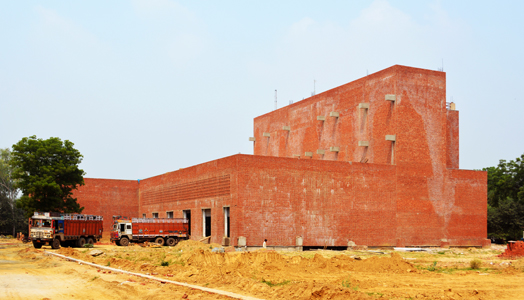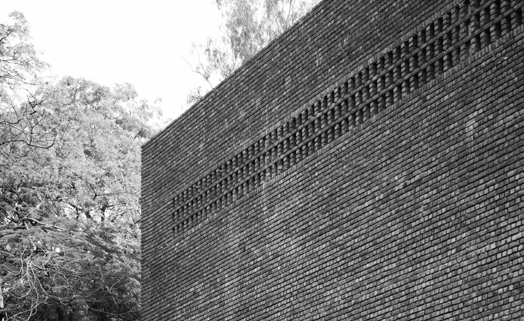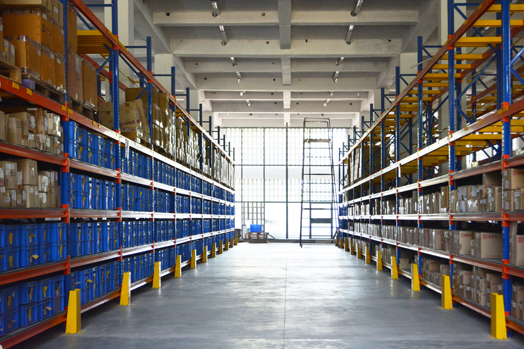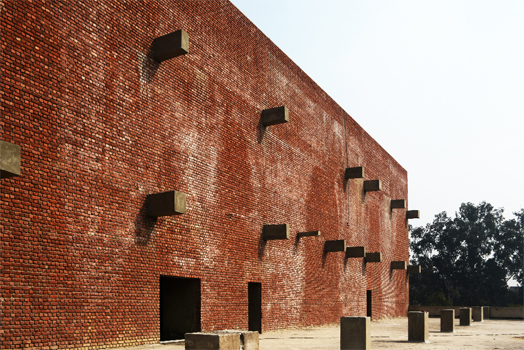Compiled
by Udita Chaturvedi
Photography:
Courtesy AKDA Team
 |
| . |
The fast-growing urban
village of Anangpur in Faridabad houses a large, ingeniously acclimatized,
fully-automated warehousing facility that is designed for minimum human
occupancy…
Planned by Amit Khanna
Design Associates (AKDA), the 1,40,000 sq. ft. warehouse is categorically
divided into three sections - the warehouse, a loading bay, and an office
block. In fact, the brief given to the architects clearly stated that the
building was to be designed for minimum human occupancy, with the exception of
the office block.
Each block of the
building is thus designed very meticulously. The warehouse is planned as a
large square, with 20 ft. high ceilings to ensure maximum efficiency, where the
dimensions of robotic arms and stocking pallets dictate spatial planning. The office is thin and narrow, facing the north
through a glazed wall that brings in optimum daylight and the loading bay provides the
interface between the two and the exterior cargo area.
Both the warehouse and
the loading bay are wrapped in a perforated brickwork screen “instead of a
conventional window-based punctured façade over the
structural frame. This brickwork screen acts as a glazed dust barrier by
creating a buffer zone that cuts glare, serves as a utility zone and
provides a high degree of passive insulation.
Meanwhile, the exposed
brick unifies the various façades and minimizes the visual impact of the building on the surroundings. A space of nearly 4 metres around the building
allows natural light to illuminate the parking and canteen areas. The architect explains,
“The layout of the warehouse enables easy stacking of future expansion with no
loss of efficiency in material or human movement.”
 |
| . |
Besides the latest
automation facilities, the USP of the building is that the AKDA design team has
fought three major challenges of the rocky terrain, Delhi’s extreme climate and
its notorious pollution levels with sustainable solutions. Adopting a
comprehensive environment and energy strategy, habitable temperatures are
maintained throughout the year. Also, thick walls ensure structural integrity
and an increased thermal mass that minimizes heat gain.
 |
| . |
The surrounding site slopes away from the subterranean floor, saving costly retaining walls and
providing views from within. These sunken areas catch rainwater for harvesting,
while the roofs are covered with reflective tiling to augment minimal heat
gain. Successfully, a post-occupancy evaluation of the building has shown a
temperature differential of over 10 degrees between the exterior and interior
spaces.
“As if that wasn’t good
enough, the light quality within the building is even, cool, bright, and
without any glare. Which, in a climate like Delhi, is nothing short of a
miracle,” the architect exclaims.





I can say this is the perfect blog for everybody who read and post here everyday. I don't know why I always visit here maybe its so nice to read here a interesting topics all day
ReplyDelete